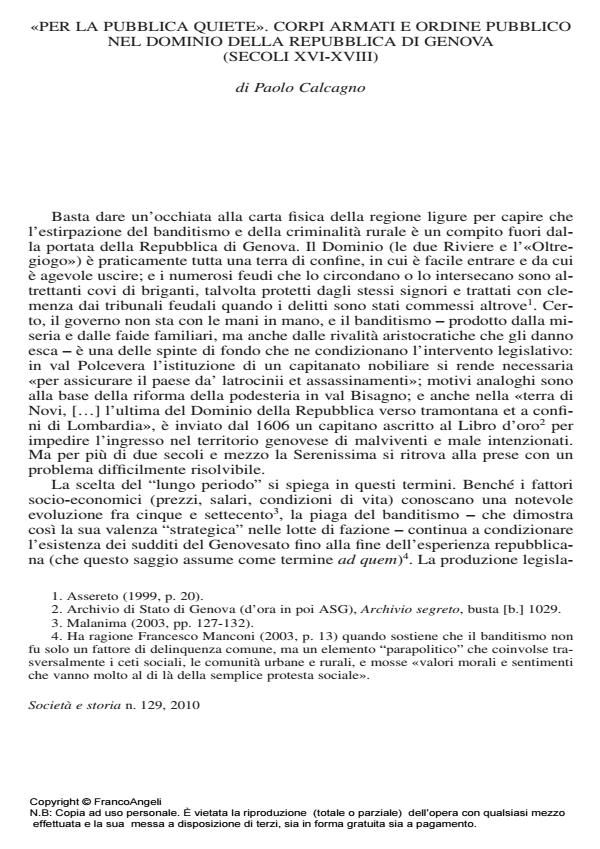«For the peace». Armed forces and public order in the Dominion of the Republic of Genoa (XVI-XVIII centuries)
Journal title SOCIETÀ E STORIA
Author/s Paolo Calcagno
Publishing Year 2010 Issue 2010/129
Language Italian Pages 35 P. 453-487 File size 750 KB
DOI 10.3280/SS2010-129002
DOI is like a bar code for intellectual property: to have more infomation
click here
Below, you can see the article first page
If you want to buy this article in PDF format, you can do it, following the instructions to buy download credits

FrancoAngeli is member of Publishers International Linking Association, Inc (PILA), a not-for-profit association which run the CrossRef service enabling links to and from online scholarly content.
The article examines banditry and rural crime in the context of the State of Genoa between the sixteenth and eighteenth centuries, relying primarily on the correspondence of magistrates and on anonymous letters sent to Senate. In spite of purposeful and repeated legislative action and of the adoption of particular punitive strategies, this social evil persisted throughout the ancien régime. The agents of Justice (bargelli, cavaleri, famigli etc.) often created more problems than they solved; the experimental use of "civilians" did not produce the desired effects; and the contribution of Army units (coming especially from Corsica) brought only temporary relief. Thus failures were more frequent than successes, but the author argues that the State managed to maintain overall control of its territory by coming to terms with patricians and local notables, and to present itself as a legitimate authority in the eyes of his subjects, thanks to its armed forces.
Keywords: Genoa, Dominion, banditry, armed forces, magistrates, communities
- Quale storia della società? Uno sguardo sull'epoca moderna Paola Bianchi, in SOCIETÀ E STORIA 178/2023 pp.711
DOI: 10.3280/SS2022-178005 - Il privilegio delle armi. La Milizia Nazionale nel Ducato di Mantova (secoli XVI-XVIII) Emanuele Pagano, in SOCIETÀ E STORIA 185/2024 pp.501
DOI: 10.3280/SS2024-185003
Paolo Calcagno, «Per la pubblica quiete». Corpi armati e ordine pubblico nel Dominio della Repubblica di Genova (secoli XVI-XVIII) in "SOCIETÀ E STORIA " 129/2010, pp 453-487, DOI: 10.3280/SS2010-129002